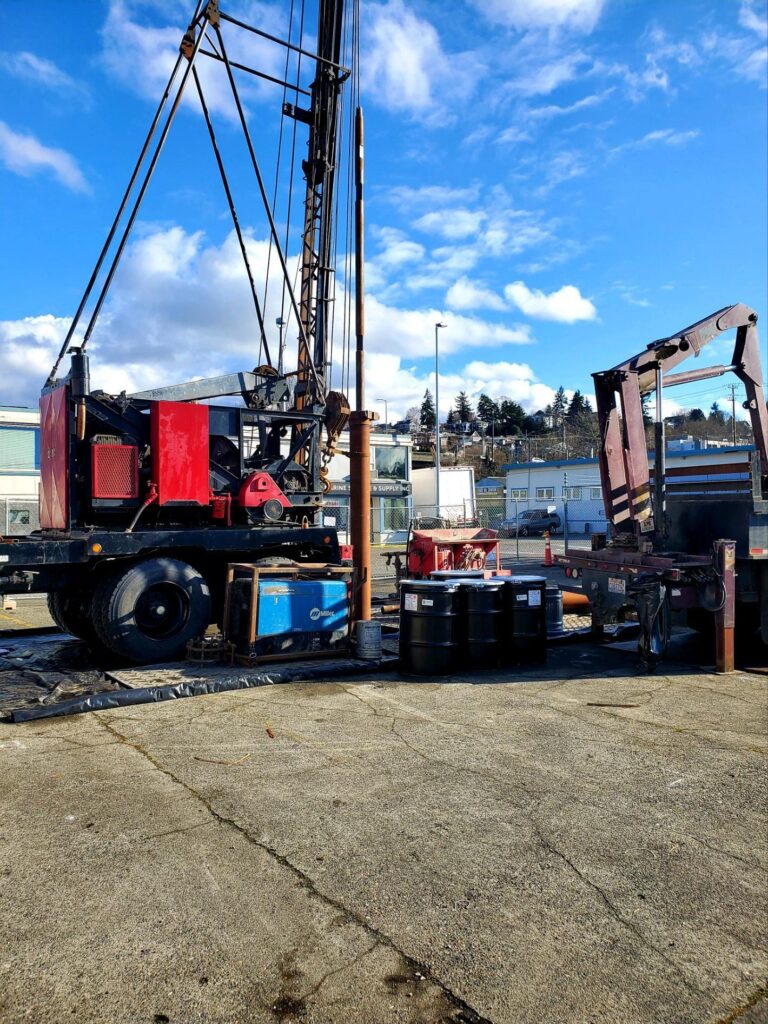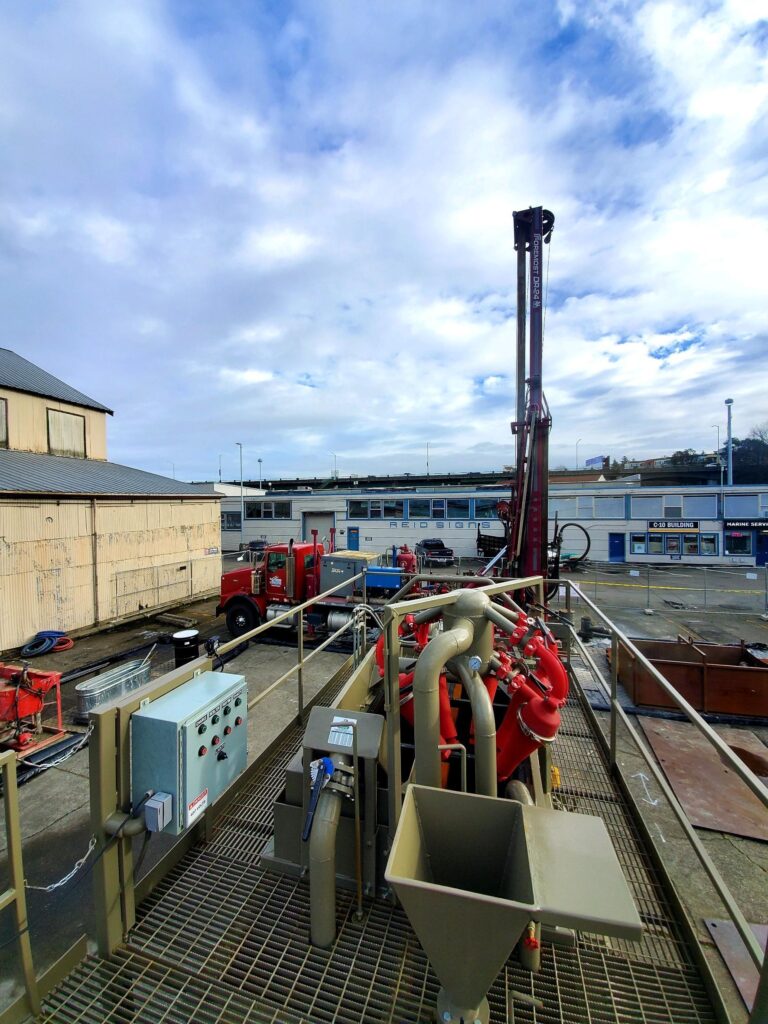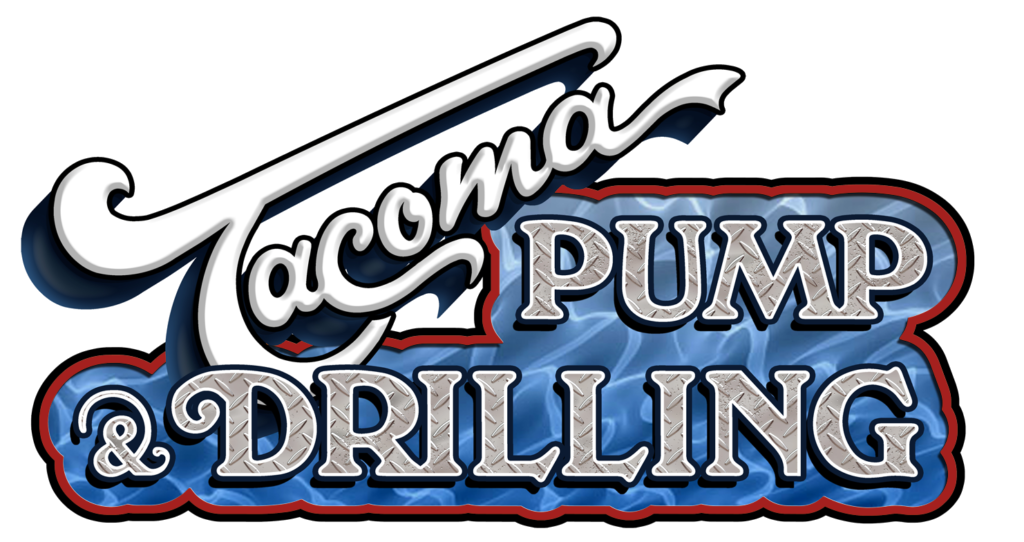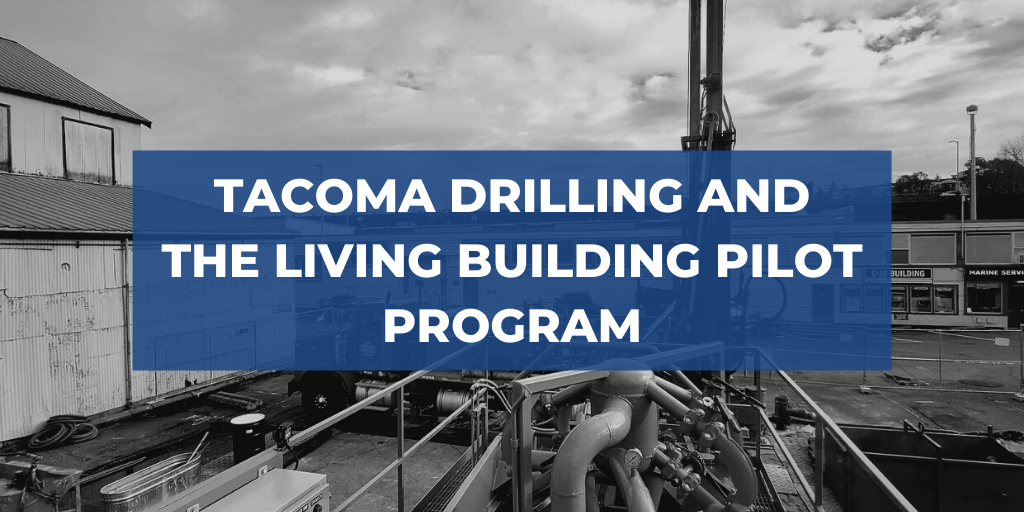What if a building could give more to the environment than it takes away? Imagine a space where more energy is produced than used, water isn’t wasted, and every material used is non-toxic and equitably sourced. That is the goal of the Living Building Challenge, an initiative of the International Living Future Institute. Since 2009, the City of Seattle has taken part in this initiative through their own program—the Living Building Pilot Program. We’re excited to partner with a local builder to participate in this program. While our role as drillers is one small piece of a larger project, here is a little behind-the-scenes insight into our participation in the Pilot Program.
Seattle’s Goal of Becoming Carbon Neutral
Through the Living Building Pilot Program, Seattle’s goal is to incrementally introduce net-zero properties. By 2050, the city aims to become a carbon-neutral community.
While it originally started in 2009, Seattle renewed the program in 2016. This created an opportunity for twenty more building projects to join the initiative. Tacoma Drilling is participating in one of those projects.
The program works by inviting developers to aim for specific green building standards. This applies to the development of new construction and additions to existing buildings. In exchange for meeting rigorous green building standards, developers can request more height and floor area than traditional building projects.
Here’s a closer look at what the program allows developers to do:
- Gain up to 25 percent more floor area or 30 percent more floor area if saving an unreinforced masonry structure.
- 12.5 feet of additional height for residential construction or 15 feet of additional height for non-residential construction in zones with height limits of 85 feet or less.
- 25 feet of additional height for residential construction or 30 feet of additional height for non-residential construction in zones with height limits greater than 85.
- Additional design departures as specified in Seattle Municipal Code 23.41.012D
Why does this matter? By letting developers request some changes to the Seattle Land Use Code, it creates opportunities for them to build net-zero properties. This opens up the ability to explore new ways to generate energy, treat water, and bring occupants closer to nature.

How the Living Building Challenge Works
The main requirement for involvement in the Pilot Program is participation in the Living Building Challenge. Developers have two options for participation: full certification or Petal certification. Either pathway leads to a reduction in energy use. Both options require that no fossil fuels be used for space and water heating (more on that in a minute!), and require a reduction in the use of potable water.
According to the LBC, living buildings are “Regenerative buildings that connect occupants to light, air, food, nature, and community.” This is achieved by following the standards, or “Petals.”
The seven performance areas or petals are Place, Water, Energy, Health and Happiness, Materials, Equity, and Beauty.
Seattle developers are encouraged to achieve at least three of the above petals, as well as energy, fossil fuel, and water requirements as outlined by the Pilot Program. This unique take on development helps to encourage more regenerative building practices in our region. We’re excited to see where it take us!
Our Role in the Pilot Program
This month, we began work on drilling a geothermal well for one of the Pilot Program building projects. Our role is to help provide heat for the building using geothermal energy, eliminating the need for fossil fuels.

Without access to renewable energy sources, the Living Building Challenge would be obsolete. Our goal is to partner our drilling expertise with renewable energy exploration as well as building projects like those in the Pilot Program. There are ways to accomplish a carbon-neutral community and we are excited to help lead the way in achieving this goal.
For more information about Seattle’s Living Building Pilot Program, visit the Seattle Department of Construction & Inspections.

